GRANT COUNTY - UW-Discovery Farms and Professional Dairy Producers of Wisconsin hosted a ‘Water Matters’ tour in Grant County on Tuesday, June 25. The tour took participants to two confined animal feeding operation (CAFO) dairies in rural Platteville – Banner Ridge Farms, and Kieler Farms.
Dr. Mark Borchardt, principal investigator in both the Kewaunee County and Southwest Wisconsin Geology and Groundwater (SWIGG) water quality studies was one of the invited speakers.
Both farms are run by multi-generation Grant County farm families, and both farms also share the distinction of having hosted the Grant County Dairy Breakfast. Both farms are also managed by and support multiple families and multiple generations of the farm family owners.
Additionally, both are conservation land use innovators, and examples of how modern agricultural technology is brought to bear to facilitate maximum production and water quality stewardship in a large operation.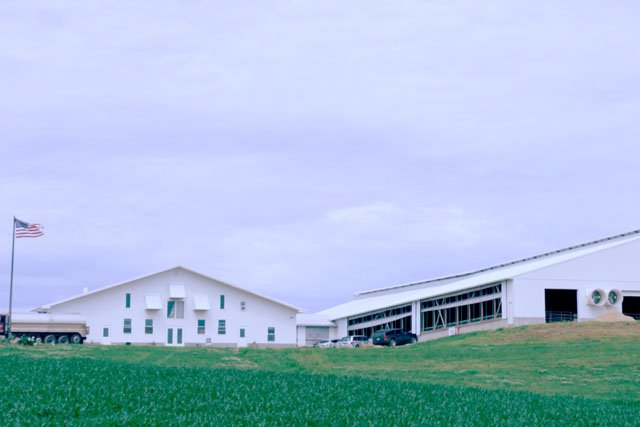

Banner Ridge
Banner Ridge Farms, located in rural Platteville, is a confined animal dairy run by the Ross family, with 420 cows, which support six families. Owners Katie and TJ Ross were on hand for the Water Matters Tour to talk about their operation and their innovative approaches to land management.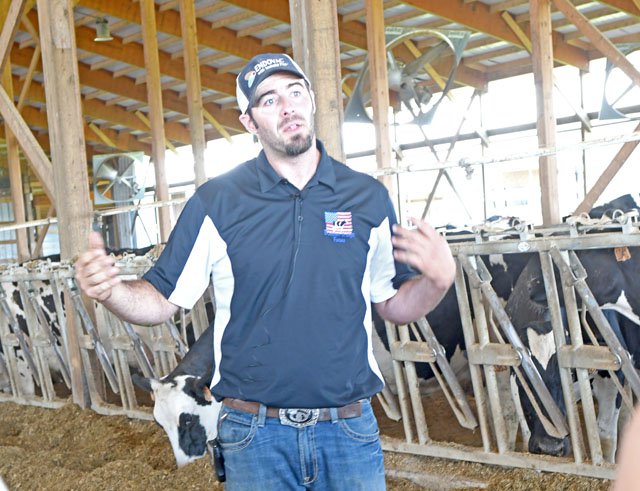

The farm sells its milk to Meister Cheese in Muscoda, and beyond that the milk is sold to dairy processors in Richland Center, Platteville and Monroe. It produces about 93 pounds of milk per day, and has 17 employees.
“Animal care and environmental stewardship are important to our family,” TJ Ross told the group.
The family beds its animals on sand, and requires delivery of about six dump truck loads per week.
“Sand is the golden standard for bedding for cow comfort,” TJ told the group. “It is bacteria-retardant, and we change it out once per week. In the future, we would like to go to a sand-recycling system like you will see at Kieler Farms later today.”
Ross told tour participants that upgrading to a sand washing system would require an up front investment of about a million dollars. In addition to the equipment and the building, there would also be an annual maintenance cost because sand is a very abrasive material.’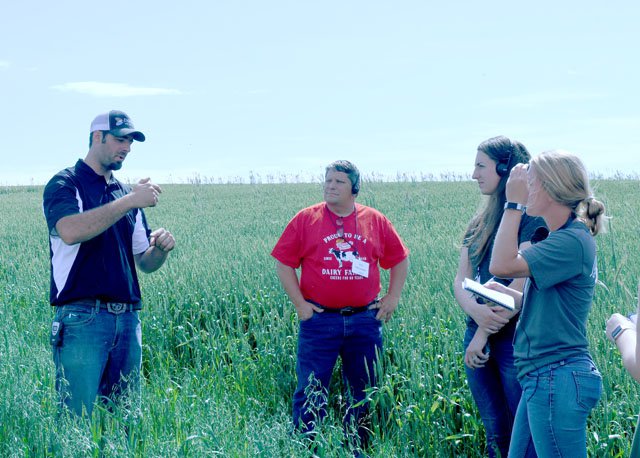

Perhaps the most innovative part of the Banner Ridge Farms operation relates to the 1,250 acres the family plants into crops. Ross told tour participants that their farm was one of the earliest adopters of no-till cropping in the county. He said that no-till is harder with dairy because they are on the fields more while spreading manure.
“About 60 percent of our farm is no-tilled, and the rest is minimum tilled about one-to-two inches deep, just to incorporate crop residue or manure,” Ross explained. “No-till knocks about 50 cents per bushel off the cost of production, mainly in the costs associated with driving the tractor.”
Ross discussed a field just across the road from the dairy where he was employing an innovative rotation. The field had been in high-moisture field corn for silage the previous growing season. After chopping the corn, Ross had no-tilled wheat into it.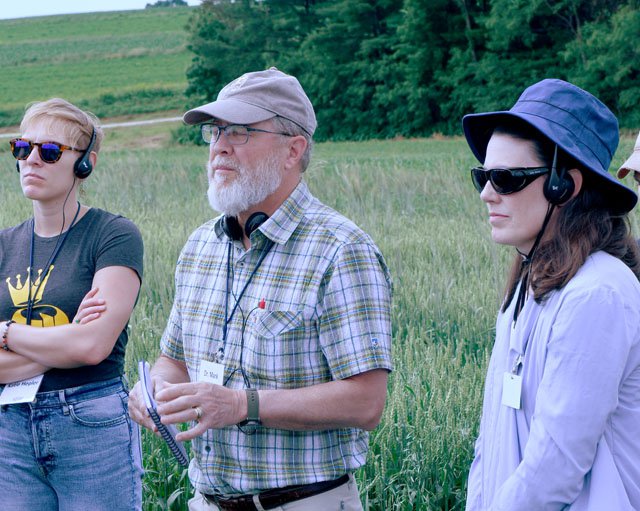

“Planting the wheat directly into the corn trash on the field was low-disturbance,” Ross said. “The wheat provides continuous cover, and the corn trash underneath helps to catch nutrients and keep them on the field where we need them.”
Ross explained that after the wheat is harvested, he will perform a summer application of manure and then plant it into alfalfa. He explained that alfalfa, with its deep taproot, will help to break up any plow pan compaction in the field that comes from planting, harvest and spreading of manure. His plan is to have the field in alfalfa for three-to-four years, followed by corn for three-to-four years.
For cover crops, Ross said he plants wheat or rye at harvest, and will sometimes use a planting of oats as a nurse crop. He said planting oats, which are quick growing, helps to reduce runoff in the peak times of March, April and May. He said that in the previous year he had experimented with planting corn into standing rye with an herbicide sprayer behind the planter.
“Planting into cereal rye preps the ground for manure application,” Ross said. “Planting into standing rye helps to reduce compaction and takes up and stores nutrients, preventing their loss through runoff.”
Banner Ridge Farms used to be a daily hauler of manure, but now they apply their manure in the spring, summer and fall. Ross said they apply the least in the spring to reduce field compaction. Most of their applications occur in the fall as the crops are harvested. He said he dreams of upgrading to a drag line system, which he describes as “ideal.”
“The biggest barrier to going to a drag line system is money,” Ross said. “It would cost a million dollars up front for purchasing the needed equipment. The biggest hurdle is always the timely availability of manure spreading service providers.”
Ross discussed the efforts of a group of 30 Grant County farmers to start a watershed council. They had held their first meeting just before the State of Wisconsin Speaker’s Task Force on Water Quality was held in Lancaster in early May. At their second meeting, they elected a board of seven composed of two “industry allies” and five farmers.
“Our inspiration was the Lafayette Ag Stewardship Alliance and Yahara Pride,” Ross explained. “Right now, our goals are to conduct some field days to get farmers talking to farmers, and going out and looking at what innovative practices other farmers are trying.”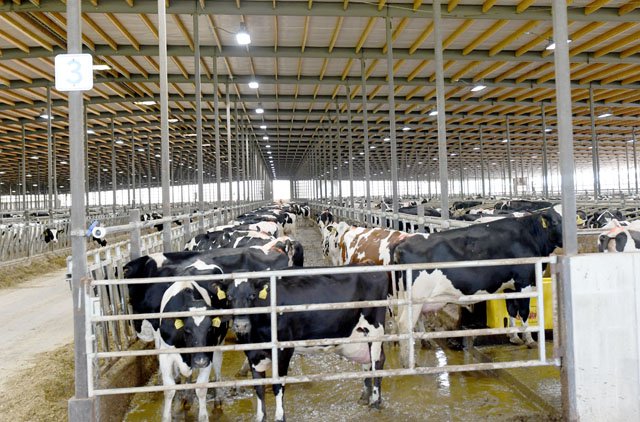

Kieler Farms
Kieler Farms, Inc. is a multi-generational family operation specializing in dairy, beef and crop production since 1947. The farm now includes 11 facilities and spans over 3,300 acres.
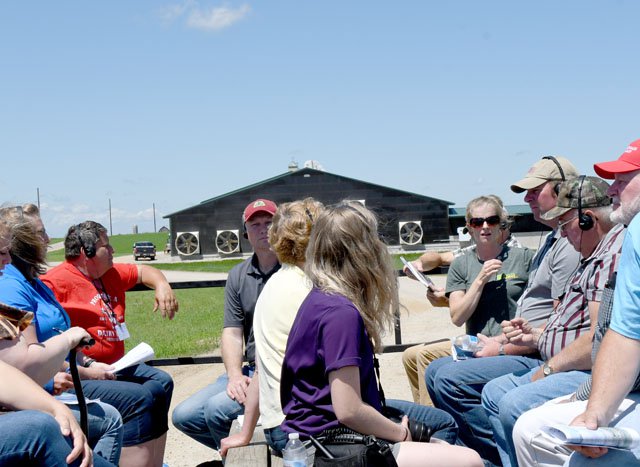

Renee Kieler, the third generation of the family to farm the land, explained the family’s evolution to their current production model which employs 1,800 milking cows in a technologically state-of-the art confinement dairy system. The dairy sells their milk to the nearby Foremost Farms plant in Lancaster.
“When my parents married, they were milking 30 to 50 cows. They had 90 cows when I was in eighth grade, and 400 before we left the old barn and upgraded,” Kieler said. “Now we milk 1,800 cows and have a rotary parlor and a sand separation system.”
The total cost of the upgraded system is reported in the operation’s Wisconsin Pollutant Discharge Elimination System (WPDES) permit as $14,405,000.
Kieler said that the use of drag lines had been a big improvement in their farm’s operations.
“It keeps us off the roads with farm equipment, which is safer for us and causes less wear and tear on town roads,” she explained. “It also reduces field compaction and reduces the odors associated with the spreading of manure.”
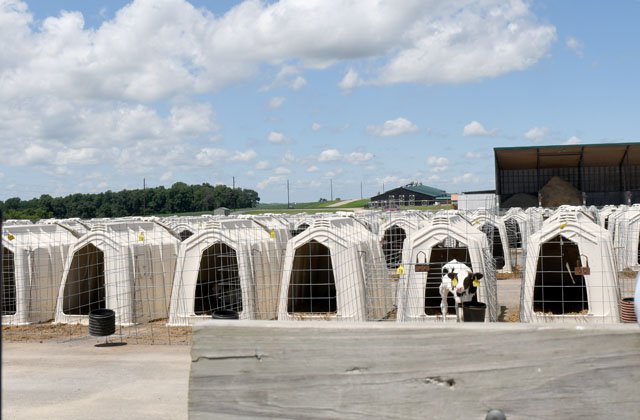

Their new dairy facility is open and spacious, with a large bank of fans along one of the walls to keep the air circulating. In one corner is an area where cows are calved, and is the only area with straw bedding instead of the sand found in the rest of the facility. Once born, the calves are moved into the 350-unit calf hutch area, located nearby on a large asphalt pad. The harvested corn silage is also housed on the pad, and the runoff from rain falling on the pad is collected and the water is used in the sand washing system, located in a nearby building.
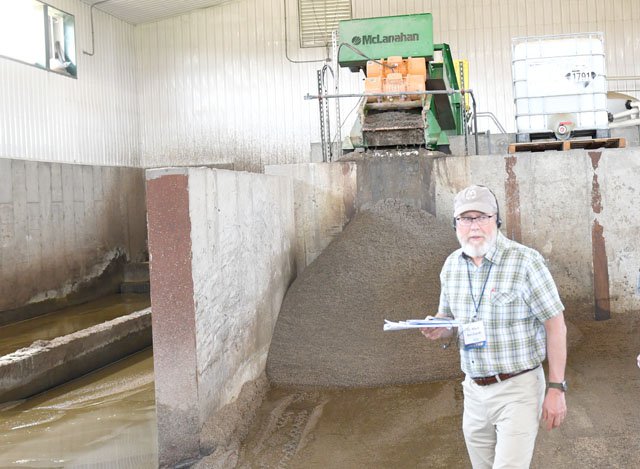

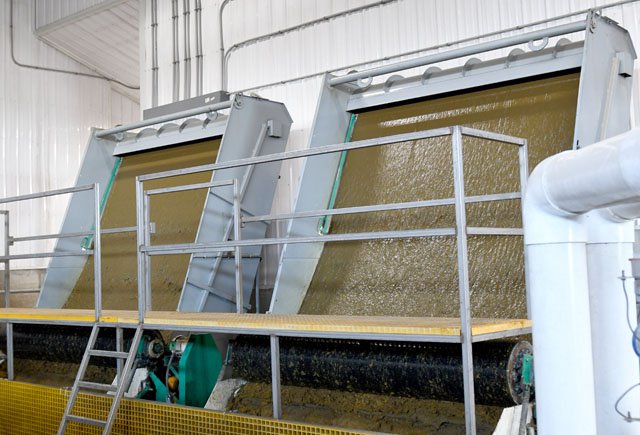

“Each time the cows are milked, the sand bedding is scraped and pushed into a flume which transports it to the facility where the manure is separated out,” Kieler explained. “The sand is brought back into the barn two times per week, and in the process we reclaim 97 percent of our sand.”
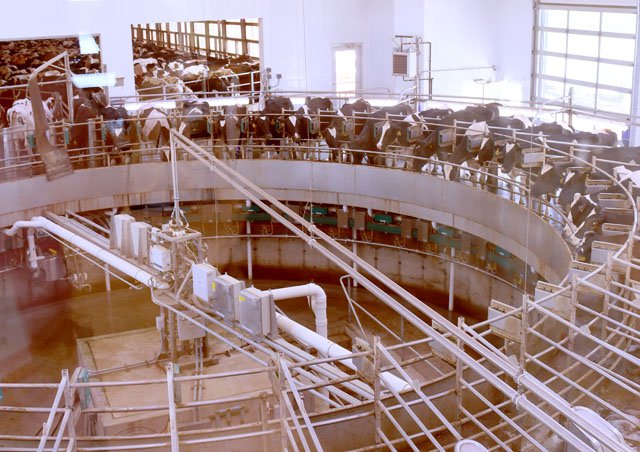

The facility’s manure storage system is designed to hold an annual 23,200,000 gallons of liquid manure. According to their WPDES permit, the manure is spread on 1,598 acres of their own land and 1,435 acres of rented land. The farm is also permitted for two high capacity wells on the site of the dairy, with an estimated water use of 132,000 gallons per day.
The land where the manure is spread is located in the Little Platte, Platte and Grant-Platte River basins. Their WPDES permit states that some of the unnamed tributaries close to the site of their dairy drain into the Little Platte River, which is classified as an exceptional recource water by the WDNR.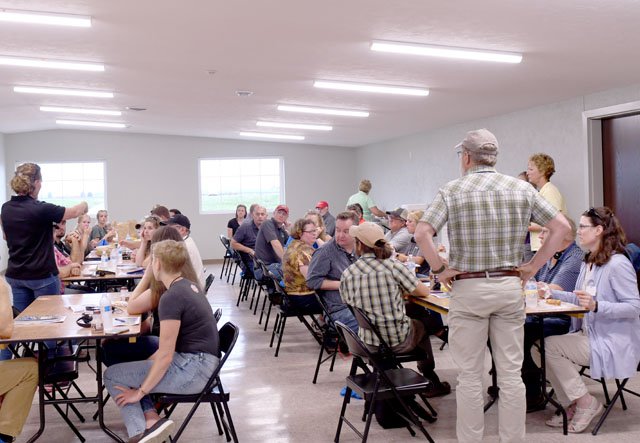

Lunch presentation
A presentation by Dr. Mark Borchardt was held after lunch was served to tour participants at Kieler Farms.
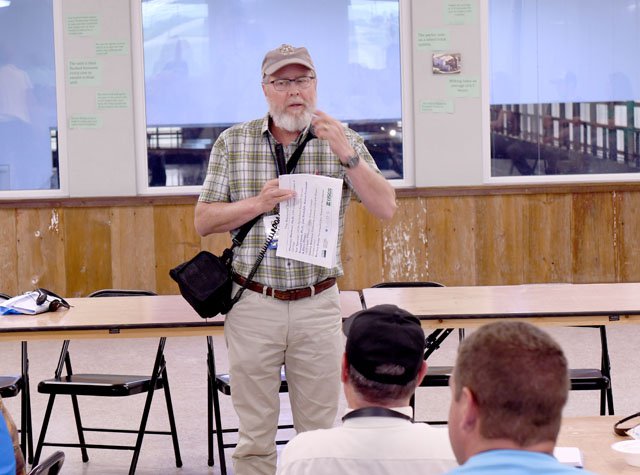

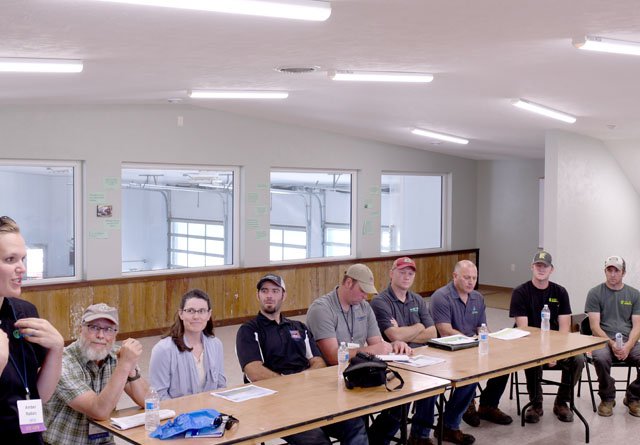

Dr. Mark Borchardt is a microbiologist who works with USDA-Agricultural Research Service and the U.S. Geological Survey Upper Midwest Water Science Center. He was the principal investigator in the Kewaunee County water quality study, and one of the co-investigators in the SWIGG study in Grant, Iowa and Lafayette counties.
Borchardt started his presentation by telling his listeners that “some of the things I’m about to tell you, you might not want to hear.” He explained that he is a scientist, and does not have an agenda.
“My motivation for doing what I do is to provide useful information to policy makers,” Borchardt said.
Borchardt described the situation with private wells in the state as “the tragedy of an open access resource – the water aquifers.”
“We’ve seen growth in some areas in the number of cows on the land, but we’ve also seen growth in septic systems and private wells in suburban and exurban areas,” Borchardt explained. “This means that both factors are associated with groundwater contamination.”
He elaborated that because the geology in the northeast part of the state had been much more throroughly studied than in the southwest area, the study there was able to employ depth to bedrock as an added dimension in selection of wells to test.
“One of the most important factors in groundwater contamination is the depth of the soil to bedrock,” Borchardt said. “In Kewaunee County, in areas where there is a lot of manure spreading and a lot of septic systems, there is a depth to bedrock, in some cases, of less than five feet, with most being less than 20 feet.”
Borchardt explained that revisions to the state’s NR151 manure management rule for 11 counties in the eastern side of the state require a minimum of 20 feet of soil above bedrock to spread manure.
“However, the Kewaunee County study demonstrated that it is actually only where there is a minimum of 50 feet to bedrock that the rate of contamination falls below the statewide average,” Borchardt said. “At 50 feet the threat of total coliform contamination falls below the state average of twenty-three percent, and the threat of nitrate contamination falls below the statewide average of seven percent.”
Borchardt explained that in Grant, Lafayette and Iowa counties, depths to bedrock were also less than 20 feet.
He said that if he personally owned a well that tested positive for coliform bacteria, he would probably continue to drink it. If the well was contaminated with nitrate, however, he said that he absolutely would not drink the water.
“Bacteria will eventually die,” Borchardt said. “Nitrate, however, will persist in the water for a very long time and has potential for very serious health impacts.”
Borchardt explained that his research in Kewaunee County about the sources of the bacteria and nitrate contamination in wells had revealed some interesting findings:
• more septic systems around a well means a greater risk for contamination by human fecal microbes
• exceeding 30 acres of ag fields [where manure is spread] around a well is associated with high concentrations of manure microbes in well water
• more cropland around a well means greater risk for contamination by high nitrate
• wells located farther from manure storage facilities are less likely to be contaminated with coliform bacteria
• depths of well casings is not related to elevated nitrates in well water.
Borchardt has tried to explain why groundwater contamination decreases with distance from a manure lagoon. According to him, possible explanations include:
• manure lagoons are, by law, allowed to leak up to 500 gallons per acre per day
• field application of manure decreases with the distance from lagoon to field.
Borchardt closed his comments by explaining that to him, the best outcome of conducting the well water testing studies and identifying contamination risk factors has been that “people learn to work together and understand that groundwater is a shared resource.”



